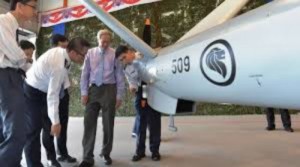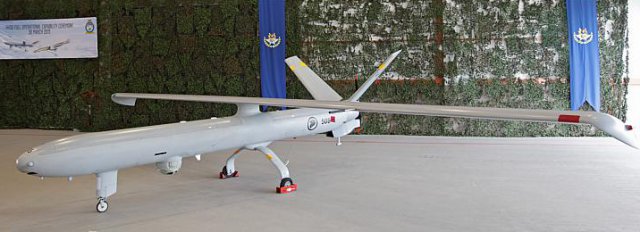After eight years, the Republic of Singapore Air Force (RSAF) has declared its first advanced Unmanned Aerial Vehicle (UAV) fully operational. UAVs are typically used to gather real-time intelligence without compromising the safety of servicemen.
The RSAF’s new UAV, called the Hermes 450 (H-450), boasts better sensors and image-processing compared to older UAVs. It can also fly for up to over 14 hours, much longer than RSAF’s older UAVs.
 Speaking at the event, Minister for Defence Ng Eng Hen said that UAVs are indispensable assets in advanced air forces around the world: “UAVs have now become a critical asset to many military operations and have proven themselves to make a decisive difference to outcomes, whether in peacetime operations or battles.”
Speaking at the event, Minister for Defence Ng Eng Hen said that UAVs are indispensable assets in advanced air forces around the world: “UAVs have now become a critical asset to many military operations and have proven themselves to make a decisive difference to outcomes, whether in peacetime operations or battles.”
The RSAF acquired the H-450 in 2007, and it took eight years before they declared it fully operational. Commanding Officer of the 116 Squadron, Lieutenant Colonel Timothy Ang, said time was needed to fully understand the H-450’s complex automated system as well as to train the team.
LTC Ang said: “This system required more of our people. Our pilots, they do not only need to fly the aircraft, they also need to control the sensor payload the aircraft carries at the same time.
“This differs from our older UAV platforms like the Searcher. Because these roles have been combined, our pilots have to go through additional training and that also took time.”
The automated plane takes off from runways and once airborne, can be set to fly a pre-programmed route. This leaves pilots in the ground control station – free to focus on collecting and processing information. However, aviation knowledge is still needed as pilots have to manage issues such as airspace and bad weather.
The dome on the underside of the fuselage has day and night time video capabilities – using a Electro-Optical for day and a Forward Looking Infra-Red System at night. It can also project laser beams on targets, which can then be picked up by a fighter pilot.
This is compared to previous UAVs owned by the SAF, which could only house two functions at any one time.
Most components on the UAV are able to self-test, allowing engineers to pinpoint issues immediately. Kalaiarasan s/o Moorthy, an Air Force Engineer, said: “Since it has a built-in diagnostic test, it allows us to prepare the systems faster. There is a 40 per cent time savings compared to the old Searcher system, so we can deliver the system to the pilots in a much faster time for flight missions to be carried out.”
In addition, software glitches can now be solved on the ground while the H-450 is still air-borne. However, if it is a hardware issue, the H-450 will have to be brought back to ground.
The H-450 is operated from a ground control station by two pilots. An additional external pilot will fly the plane from the runway during take-off and landings. External pilots typically clock 20 hours in a flight simulator to practice take-off and landings in a range of situations.
UAVs were first used in overseas operations as part of the SAF’s six-year long deployment to Afganistan. For three months, the SAF’s UAVs supported the International Security Assistance Force by providing surveillance over key roads and identifying Improvised Explosive Devices (IED) threats. The older UAV model, the Searcher, was used then.
Top Photo: LIANHE ZAOBAO
Centre Photo: Minister for Defence Ng Eng Hen receiving a brief from LTC Timothy Ang (R) on the capabilities of the Hermes-450 – MINDEF
Source: Channel News Asia

